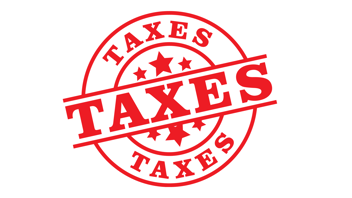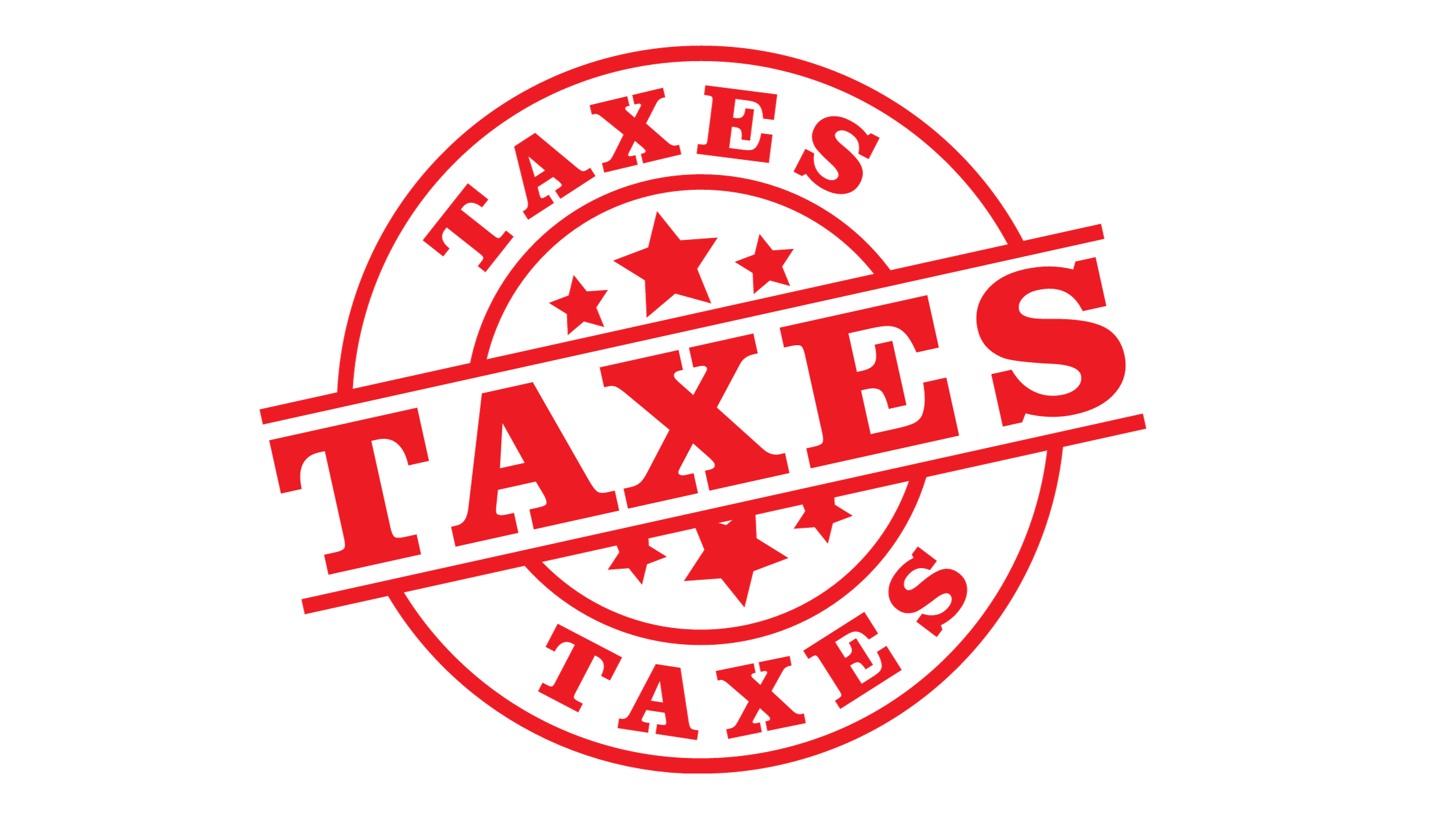The coming years will bring significant tax changes that affect VAT, income tax, motor vehicle tax, as well as new taxes such as the security tax. In addition, there are changes in land tax, excise duties, and various tax incentives. In this blog post, we will look at exactly what will change and how these changes will impact entrepreneurs, individuals, and organizations. We will also provide practical examples to make the changes clearer.
Significant tax changes will come into effect in Estonia in 2025. We will examine the changes in more detail and analyze how they differ from 2024.
VAT changes
Increase in VAT rates and exceptions
- As of January 1, 2024, the general VAT rate is 22%.
- From July 1, 2025, a security tax will be added, raising the VAT rate to 24%.
Other VAT rate changes:
| Goods/Service | New Rate (from 2025) | Previous Rate |
|---|---|---|
| Accommodation with breakfast | 13% | 9% |
| Publications (print and digital) | 9% | 5% |
Special scheme for small enterprises
The small business scheme is a provision across European Union member states designed to simplify VAT accounting for small businesses and reduce their administrative burden. This applies to small businesses operating in multiple member states.
Key conditions for applying the special scheme:
- The company’s total turnover in the European Union must not exceed 100,000 euros annually.
- Turnover in a specific member state must not exceed the VAT registration threshold in that country.
How to apply the special scheme?
- The entrepreneur must submit a preliminary notice to the Tax and Customs Board (MTA) regarding the intention to use the scheme.
- A registration number with the suffix “EX” will be issued to the company using the scheme.
- The entrepreneur must submit a quarterly report to the MTA, declaring turnover by member state.
Important limitations:
- If a company’s turnover in any member state exceeds the local threshold, the scheme cannot be applied in that country for the next two years.
- If the company’s total turnover across the EU exceeds 100,000 euros, VAT accounting must revert to the standard system.
Input VAT limitations:
- A company using the special scheme cannot deduct input VAT on goods and services used for transactions taxed under the scheme.
- To deduct input VAT, the company must register as a VAT payer in the member state where goods or services are acquired.
Examples of applying the scheme:
- An Estonian company has 50,000 euros in turnoverin Estonia and 10,000 euros in another EU member state. The total of 60,000 euros is below the 100,000 euro threshold. The special scheme can be used if the local threshold is not exceeded.
- An Estonian company has 10,000 euros in turnover in Estonia, 10,000 euros in another EU member country, and 20,000 euros in outside EU country. The total of 40,000 euros is below the 100,000 euro threshold. The scheme can be applied in all countries where the local threshold is not exceeded.
Additional changes
Sale of new buildings
Content of the change:
- Previously, only the first sale of new buildings was subject to VAT, where a “new building” referred to one that had not yet been put into use.
- Starting from January 1, 2025, a building will also be considered “new” if it is sold within one year of first use or reuse following significant improvement.
Clarification:
- Significant improvement refers to renovation or reconstruction to such an extent that the building is substantially changed (improved technical condition or increased value).
- If a “significantly improved” building is sold within one year of reuse, it constitutes taxable turnover.
- First use: The moment the building becomes usable, e.g., when a usage permit is issued.
Practical example:
Renovation of a building was completed on March 1, 2024, and it was put into use the same day. If the building is sold before March 1, 2025, it constitutes taxable turnover.
Input VAT accounting changes
Content of the change:
- Under the current system, input VAT on the purchase of fixed assets and other goods can be deducted based on an initial estimate, with adjustments made later according to actual usage.
- From January 1, 2025, the entire input VAT must be recalculated immediately based on the initial usage of the asset or service.
Practical impact:
- When purchasing fixed assets, the initial decision must be made carefully, as opportunities for reassessment will become more limited.
- If the asset is initially used for VAT-exempt activities, input VAT cannot be deducted even if the asset is later used for taxable activities.
Corporate income tax
Tax rate increase
From January 1, 2025: the corporate income tax rate will be 22/78 (effective tax rate: 28.21%).
| Example | 2024 (20/80) | 2025 (22/78) |
|---|---|---|
| Distributed profit | 100,000 € | 100,000 € |
| Income tax | 25,000 € | 28,205 € |
- The 14/86 dividend tax rate and the 7% withholding tax will be abolished.
Fringe benefits and allowances
Increase in company car fringe benefit tax
Background and calculation:
When an employer allows an employee to use a company car for private purposes, it is considered a fringe benefit subject to income tax and social tax. The taxable value depends on the car’s engine power in kilowatts (kW) and the applicable tax rate.
2024:
The fringe benefit value was calculated as: 1.96 x 20/80 = 0.49 €/ per kW
2025:
Due to the corporate income tax increase, the formula will change to:1.96 x 22/78 = 0.5528 € per kW
Example: if a company car has an engine power of 110 kW, the fringe benefit tax calculation will be:
| Year | Formula | Taxable Amount |
|---|---|---|
| 2024 | 110 kW × 0.49 € | 53.90 € per month |
| 2025 | 110 kW × 0.5528 € | 60.81 € per month |
Result: In 2025, the taxable fringe benefit amount increases by 6.91 € per month for vehicles with a 110 kW engine. Higher engine power will result in an even greater tax burden.
Increase in daily allowance for foreign business trips
Purpose of tax-free daily allowance:
The daily allowance is a tax-free sum paid to employees to cover expenses during a foreign business trip, up to a certain limit.
2024:
The tax-free daily allowance for foreign business trips was up to €50 per day (for the first 15 days), and up to €32 per day thereafter.
2025:
The tax-free daily allowance for foreign business trips will increase to up to €75 per day (for the first 15 days), and up to €40 per day thereafter.
Example: if an employee spends 5 days on a foreign business trip:
| Year | Daily Allowance | Total Tax-Free Sum |
|---|---|---|
| 2024 | 50 € × 5 days | 250 € |
| 2025 | 75 € × 5 days | 375 € |
Result: In 2025, the daily allowance increases by 125 € for a 5-day business trip.
Personal car allowance
Background and purpose:
When an employee uses their personal car for work-related tasks, the employer can reimburse the costs tax-free. The reimbursement amount depends on the kilometers driven and the applicable rate.
2024: the reimbursement rate was 0.3 € per kilometer, up to a maximum of 335 € per month.
2025: the reimbursement rate will increase to 0.5 € per kilometer, up to a maximum of 550 € per month.
Example: if an employee drives 500 km per month for work:
| Year | Rate per Kilometer | Total Reimbursement |
|---|---|---|
| 2024 | 500 km × 0.3 € | 150 € per month |
| 2025 | 500 km × 0.5 € | 250 € per month |
Result: The reimbursement amount increases by 100 € per month for the same mileage.
The maximum tax-free reimbursement for using a personal vehicle for work purposes will be up to €550 per month in 2025.
Conditions:
- The reimbursement is tax-free if the employer maintains a mileage log that records trips made for work tasks.
- The reimbursement rate is €0.50 per kilometer, but the total amount cannot exceed €550 per month. Any amount exceeding this limit will be subject to income tax and social tax.
Example Calculation:
If an employee drives 1,100 kilometers per month for work tasks:
1,100 km × €0.50 = €550 (maximum tax-free reimbursement).
Tax-Free Health Promotion Expenses
Currently, only expenses mandated by the Occupational Health and Safety Act are recognized as business-related expenses.
From January 1, 2025, the list of tax-free health promotion expenses will be expanded to include: massage, dental care, nutrition counseling
sychological treatmentThis expansion aims to support employee well-being in a more comprehensive manner.
Summary table
| Type of Benefit/Compensation | 2024 | 2025 |
|---|---|---|
| Company Car Fringe Benefit | €0.49 / kW | €0.5528 / kW |
| Daily Allowance for Foreign Travel | €50 / day (up to 15 days) €32 / day (after that) |
€75 / day (up to 15 days) €40 / day (after that) |
| Personal Car Compensation | €0.30 / km (tax-free up to €335 / month) |
€0.50 / km (tax-free up to €550 / month) |
| Hospitality Expenses | Up to €32 / month | Up to €50 / month |
| Health Promotion Expenses | Up to €400 / year / employee (condition: €100/quarter) |
Up to €400 / year / employee (no time condition) |
| Free Promotional Gifts | Up to €10 | Up to €21 |
| Accommodation Costs for Employees | In Tartu/Tallinn up to €200 / month | In Tartu/Tallinn up to €500 / month |
Personal income tax
Tax rate and the "Tax Cliff"
Income tax rate increase
- In 2024, the personal income tax rate is 20%.
- Starting 2025, the income tax rate will increase to 22%.
Example: if a person’s taxable income is 2,000 € per month, the income tax calculation will be as follows:
| Year | Income Tax Rate | Income Tax Amount |
|---|---|---|
| 2024 | 20% | 2,000 € × 20% = 400 € |
| 2025 | 22% | 2,000 € × 22% = 440 € |
Result: In 2025, the income tax amount will increase by 40 € per month for a taxable income of 2,000 €.
Postponement of the tax cliff elimination
The existing "tax cliff" in Estonia, where the basic tax-free allowance decreases for higher incomes, will not be eliminated in 2025 as originally planned. Its removal has been postponed to 2026.
2024–2025 System: the tax-free allowance depends on a person’s income:
| Monthly Income (€) | Tax-Free Allowance (€) |
|---|---|
| 0–654 € | Up to 654 € |
| 1,200–2,100 € | Gradual decrease |
| Over 2,100 € | 0 € (all income taxable) |
Tax-Free Income Threshold
In 2025, the maximum tax-free allowance will remain 654 € per month (or 7,848 € annually) and will apply only to individuals with lower incomes.
Example of tax-free allowance calculation:
| Monthly Income (€) | Tax-Free Allowance (€) |
|---|---|
| 500 € | 500 € |
| 1,200 € | 654 € |
| 1,800 € | 300 € |
| 2,100 € | 0 € |
Motor vehicle tax
Motor Vehicle Tax (Car Tax) is a tax applied to passenger cars and other motor vehicles (such as vans; motorcycles and mopeds; off-road vehicles; wheeled tractors) based on their technical characteristics and age. This tax is part of the national strategy aimed at reducing environmental impact, increasing tax revenue, and encouraging people to make more environmentally friendly choices. The tax consists of two main components: an annual tax and a registration fee.
Annual Tax
The annual tax is a periodic fee that must be paid each year and is calculated based on three main factors: CO₂ emissions (excluding fully electric vehicles), vehicle weight, and age.
Registration Fee
The registration fee is a one-time payment required upon the first registration of the vehicle or during a change of ownership. This fee is also determined by the vehicle’s CO₂ emissions, weight, and age.
- First Registration: When purchasing a new vehicle or importing it from abroad, the registration fee must be paid.
- Change of Ownership: When a vehicle changes ownership, the new owner is required to pay the fee along with registering the vehicle (unless the registration fee has already been paid).
Deadlines
- Tax notifications: The first official tax notifications will be sent out on February 15, 2025. The notification will include information about the amount, calculation methods, and payment deadlines.
- Annual tax payment deadlines: The annual tax must be paid in two installments:
- June 15 – First payment
- December 15 – Second payment
Security tax
The security tax is a temporary measure introduced for the years 2026–2028 to strengthen national defense and increase resources for security needs. The tax consists of three main components affecting consumption, individual incomes, and corporate profits. Its purpose is to distribute the burden across the economy to ensure sustainable funding for defense expenses.
Security tax components:
2% Surcharge on VAT starting July 1, 2025
- This is a consumption-based tax added to the existing VAT.
- If the VAT rate is 20%, the effective rate with the security tax becomes 22%.
Scope: The surcharge applies to all goods and services subject to the standard VAT rate.
Example:
If an item costs 100 € before taxes:
- With the standard 20% VAT, the final price is 120 €.
- With the additional 2% security tax, an extra 2 € is added → Final price: 122 €.
2% Tax on Corporate Profits Starting from 2026
Corporate income tax will apply to taxable profits after deducting expenses. It will be levied on all companies with taxable profits. Taxable profit is determined based on the profit reported in the annual financial statements. No tax liability arises in case of a loss, and losses from previous periods cannot be carried forward. Under the security tax, unrealized profits will also be subject to taxation at the end of the fiscal year since they are reported as accounting profits. Typically, unrealized profits are not taxed until the asset is sold and the profit is realized.
Exclusions from the Tax Base
Dividends paid out from profits already taxed under the security tax or dividends that have been taxed in a foreign country (if the dividend recipient has at least a 10% stake in the distributing company).Profits earned through a foreign permanent establishment by a resident company.
Tax Period and Reporting
The tax period corresponds to the company's fiscal year. A declaration of taxable profits earned during the fiscal year must be submitted to the Tax and Customs Board by the 10th day of the 9th month following the end of the fiscal year. The tax must be paid by the same date.
Advance Payments
Taxpayers are required to make advance payments by the 10th day of the last month of each quarter.This change requires companies to pay close attention to their accounting practices and carefully plan their taxes.
Example:
If a company’s taxable profit is €100,000 per year:
- 2% tax: €100,000 × 0.02 = €2,000 per year
Purpose of the Security Tax
The primary objective of the security tax is to strengthen the country's defense capability and provide additional funding for security needs. This is driven by:
- Rising Defense Costs: Ensuring security requires increased investments in national defense capabilities, including the development of defense forces, armament, and infrastructure.
- International Security Situation: A changing geopolitical environment demands enhanced preparedness and additional expenditures from the state.
Minimum Wage Increase in 2025
The minimum wage in Estonia will increase by €66 in 2025, reaching €886 per month for full-time work. This represents an 8% growth compared to 2024, when the minimum wage is €820.
The minimum hourly rate will rise from €4.86 in 2024 to €5.31 in 2025.
Comparison of Minimum Wage Payroll for 2025 and 2024
2025 Minimum Wage (€886)
Employee taxes and net salary (considering the tax-free minimum):
- Gross salary: €886
- Income tax: (€886 - €654 - €14.18 - €17.72) × 22% = €44.02
- Employee unemployment insurance premium: €886 × 1.6% = €14.18
- Funded pension (Pillar II): €886 × 2% = €17.72
- Net salary: €886 - €44.02 - €14.18 - €17.72 = €810.08
Employer taxes and total cost:
- Social tax: €886 × 33% = €292.38
- Employer unemployment insurance premium: €886 × 0.8% = €7.09
- Total employer cost: €886 + €292.38 + €7.09 = €1185.47
2024 Minimum Wage (€820)
Employee taxes and net salary (considering the tax-free minimum):
- Gross salary: €820
- Income tax: (€820 - €654 - €13.12 - €16.40) × 20% = €27.30
- Employee unemployment insurance premium: €820 × 1.6% = €13.12
- Funded pension (Pillar II): €820 × 2% = €16.40
- Net salary: €820 - €27.30 - €13.12 - €16.40 = €763.18
Employer taxes and total cost:
- Social tax: €820 × 33% = €270.60
- Employer unemployment insurance premium: €820 × 0.8% = €6.56
- Total employer cost: €820 + €270.60 + €6.56 = €1097.16
Comparison Table
| Indicator | 2024 (€820) | 2025 (€886) | Increase |
|---|---|---|---|
| Gross salary | €820 | €886 | +€66 |
| Net salary | €763.18 | €810.08 | +€46.90 |
| Income tax | €27.30 | €44.02 | +€16.72 |
| Employee unemployment insurance | €13.12 | €14.18 | +€1.06 |
| Funded pension (Pillar II) | €16.40 | €17.72 | +€1.32 |
| Social tax (employer) | €270.60 | €292.38 | +€21.78 |
| Employer unemployment insurance | €6.56 | €7.09 | +€0.53 |
| Total employer cost | €1097.16 | €1185.47 | +€88.31 |
Upcoming Tax Changes
The forthcoming tax changes are extensive and will impact both businesses and individuals. Evaluate your financial strategy and budget to prepare for these changes. Early planning can help better manage their impact and optimize your tax obligations.






